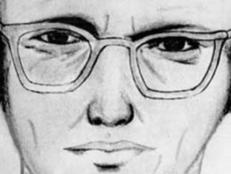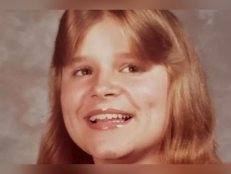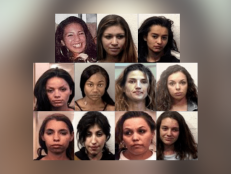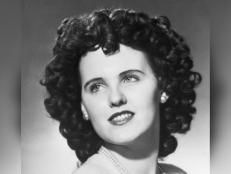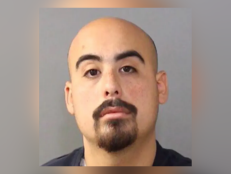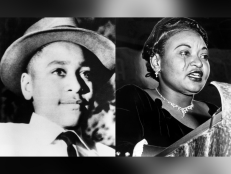About The Manson Girls & How 'Normal' People Can Turn To Violence & Murder
“We have a designated place in our chamber of horrors for psychopaths. We have no such place for someone who is 'normal.'”
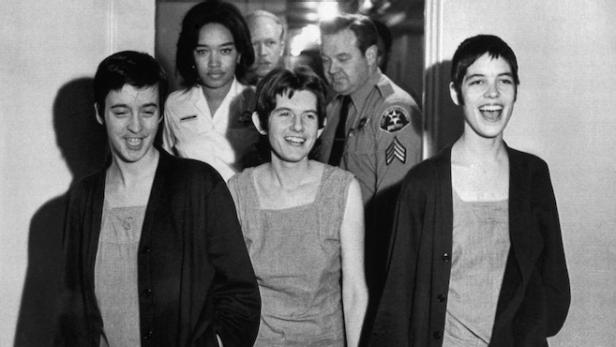
Getty Images
Susan Denise Atkins, (left), Patricia Krenwinkel, and Leslie Van Houten (right), laugh after receiving the death sentence for their part in the Tate-LaBianca killing at the order of Charles Manson.
Nikki Meredith has an unusual advantage over most people who write about members of the Manson Family. She’s not only been friends with two of the most notorious women of the group — Leslie Van Houten (above, right) and Patricia Krenwinkel (above, middle) for two decades — but she also went to high school with another of Charlie’s girls, Catharine Share, aka “Gypsy.”
![Nikki Meredith [courtesy Nikki Meredith]](http://investigationdiscovery.sndimg.com/content/dam/images/investigationdiscovery/crimefeed/legacy/2018/05/NIKKIPHOTO1.jpeg.rend.hgtvcom.581.872.suffix/1546650274974.jpeg)
Nikki Meredith [courtesy Nikki Meredith]
In her new book, The Manson Women and Me: Monsters, Morality, and Murder, Meredith explores these relationships and how they’ve changed her life. She also uses the experience of the Manson women as a lens to analyze how otherwise “normal” people can turn to violence and murder under extraordinary circumstances — such as the Holocaust, the Stanford Prison Experiment, and jihadist terrorist groups such as ISIS.

Amazon
CrimeFeed: How did you decide to write to and request to visit Leslie Van Houten and Patricia Krenwinkel in prison in 1996?
Meredith: During my career as a journalist, going into prisons to interview all manner of felons has been, if not exactly routine, frequent enough so when I decided I wanted answers from the Manson women, it was a natural impulse to go directly to the source. In 1995 I saw a documentary, A Journey to Evil, that Patricia Krenwinkel and Leslie Van Houten were part of. The two women I saw on the screen bore no resemblance to the young women I remembered from the trial. At that time, they not only didn’t express remorse, they mocked the suffering of the families and the palpable fear the murders had engendered in the country. Every night, the local news carried footage of them singing, laughing, and skipping down the halls of the courthouse, behaving as though they were on the way to a hippie hoedown. Were the sober, articulate, remorseful women on the screen truly changed or was it an act? And, if they had truly changed, what caused the change? I was compelled to find out. And, from their perch of middle age, how could the women explain why they had followed Manson’s orders to so brutally murdering innocent people – people they didn’t know?
I bet you didn’t expect your relationship with the women to continue for over 20 years. What roles do Leslie and Pat play in your life now?
When I first wrote to the women, I certainly did not expect that my relationship would continue over such a long period. From the outset, however, I had problems with almost every aspect of the project, so at varying intervals, my frustration would reach intolerable levels, and I’d conclude that the whole thing was doomed. I’d pack up my notes and move on to other assignments. I never, however, lost interest in the women and continued to visit and correspond.
![Leslie Van Houten, 1969 [Los Angeles County Sheriff's Department]](http://investigationdiscovery.sndimg.com/content/dam/images/investigationdiscovery/crimefeed/legacy/2017/05/leslie-van-houten-aug-16-arrest_620x349.jpg.rend.hgtvcom.616.347.suffix/1546650370520.jpeg)
Leslie Van Houten, 1969 [Los Angeles County Sheriff's Department]
I’m sad to say, Pat and I are no longer in contact. In the book, I explore the reasons in depth but, in short, it had to do with a blurring of roles. The situation with Leslie is different. Her attorney has asked that she distance herself from people in the media until her parole situation is resolved. The fact that there are so many people on the outside who support her release has been repeatedly used against her. While it’s true that she has asked people who know her to write letters recommending her release to the parole board, the district attorney’s office has claimed that she has systematically rallied the media to support her. This seems unfair since Debra Tate, Sharon Tate’s sister, has made it her life’s work to keep Leslie in prison forever despite the fact that Leslie had nothing to do with her sister’s murder. I look forward to the time when this is resolved, Leslie can go home, and she and I can resume our relationship.
You went to high school with another Manson girl, Catherine Share — “Gypsy.” How well did you know her?
We were in the same social club at Hollywood High, and years later when I first heard her name associated with Manson, I assumed it was a different Catherine Share. When I think of her at Hollywood High, I remember a quiet, restrained girl. She was smart and talented with a pure singing voice — a violin virtuoso. In high school, if I had voted on what Catherine was most likely not to become, it would have been a recruiter of young girls for a psychopathic serial killer. Her primary quarry: pretty girls who could be used as bait to attract men into the fold and girls who had access to their parents’ credit cards.
Although she was in the inner circle of the group at the time of the murders, Manson had not included her in his plan either night of the two-night murder spree. She’s quoted on a website (manson2jesus.com) as saying she wouldn’t have participated in the murders even if Manson had asked her to but, given what she did do for Manson, there’s ample reason to doubt the validity of that claim. After Manson was in prison, Catherine was a major aider and abettor on the outside, working assiduously and violently under his direction. Among her crimes: attempting to kill a witness and to steal guns from a surplus store. The most chilling charge, however, occurred in 1971 when she and several cohorts planned to highjack a Boeing 747 and kill one passenger every hour until Charles Manson, Tex Watson, and the three women were released from prison.
![Manson Family Cultists 1970 Lynette “Squeaky” Fromme (left), and Catherine “Gypsy” Share, speaking outside the courtroom in the Los Angeles Hall of Justice after the hearing, January 27, 1970 [AP Photo/David F. Smith]](http://investigationdiscovery.sndimg.com/content/dam/images/investigationdiscovery/crimefeed/legacy/2018/05/AP_7001270193.jpg.rend.hgtvcom.616.411.suffix/1546650426702.jpeg)
AP Photo/David F. Smith
Lynette “Squeaky” Fromme (left), and Catherine “Gypsy” Share, speaking outside the courtroom in the Los Angeles Hall of Justice after the hearing, January 27, 1970 [AP Photo/David F. Smith]
One of the perpetual puzzles for me was how could that girl, a girl whose biological parents had died under Hitler’s reign, dedicate her life to a man who carved a swastika on his forehead? How could she subsequently marry Kenneth Como, a member of the Aryan Brotherhood?
You mention that at one point when you were visiting Leslie, Susan Atkins stopped by your table. And also that Pat and Leslie interact. I’m shocked to learn that that was allowed. I had always assumed they were never allowed contact with each other.
There had only been four women executed in California since 1893, so only one death-penalty cell had been built, and it was occupied at the time by Jean Oliver Carver, who was convicted of beating a woman evangelist to death with a rock during a robbery. So the warden at the time commandeered a crew of inmates from the nearby men’s prison at Chino to create a miniature Death Row. So when the “Manson Girls” were first imprisoned at Frontera, they were separated by cells, but it was this makeshift Death Row, with mesh between the cells, so there was an opportunity to talk. The only restriction that I’ve been aware of: They are not able to visit with the same person from the outside at the same time. This doesn’t prevent them from interacting in the prison and in the visiting room.
In your attempt to understand how the women you came to know had been capable of such brutality and lack of empathy, you consider sorority hazing, the Holocaust, the Stanford Prison Experiment, and Abu Graib as examples of how a group dynamic can influence. Can you talk more about that? Most people hang the blame on Manson as Svengali.
I, like most people, assumed that Manson was the critical variable in the transformation of Pat and Leslie from young women whose humanity was intact to cold-blooded murderers, and there’s no question that he was central to the process. But recent research has focused on the relationship among the members of the group as an essential component to changing behavior.

Susan Atkins [California Department of Corrections]
Bill Swann, a professor at the University of Texas who has studied young jihadists from Western countries who flock to join ISIS, calls this kind of group reinforcement "identity fusion." Groups, where identities are fused, tend to annihilate the self. Years ago, both Pat and Leslie told me independently that when they were with the “Manson family” they had no self. I had assumed that the women continued to be disconnected from the reality of their behavior because Manson still had a hold on them. If, however, identity fusion is as powerful as Swann suggests, it seems just as likely that it was because the three women — Pat, Leslie, and Susan Atkins — continued to reinforce Manson’s philosophy and gather strength from each other at Frontera.
Pat said her deprogramming was initiated by Jean Oliver Carter, the other woman who had been condemned to death. When Pat talked dreamily about Manson, elaborating on the way he made her feel good about herself, the way he was endowed with special powers, the way he knew secret things about her and other people, Carver would say, “Honey, those are all old tricks. He sounds just like dozens of men I’ve known — hustlers, pimps, convicts.”
But how does fused identity lead to cold-blooded killing? The necessary ingredient for that conversion, according to Swann, is the perception that the group is threatened and that dramatic action is required to defend it. Before this step, however, the leader must get them to sever ties with their existing groups, usually families. Manson not only discouraged his followers from maintaining contact with their families, he used those relationships as weapons. “I still see your mother in you,” he would yell at Leslie if she challenged his dictates or expressed values he considered conventional.
Manson brainwashed the kids into believing their parents and the other adults in their lives responsible for socializing them were the enemies. They were the ones responsible for the unhappiness they felt before they found Manson, the ones who made them feel that they didn’t measure up. “You are beautiful the way you are” was his message.
Swann describes members of these groups as having a “visceral sense of oneness.” When I imagine how the Manson family defended itself from external threats, I picture a sea anemone. When you poke it with a stick, the whole organism shrivels in response, killing whatever organism finds itself entombed.
How did Manson’s death affect you? How did his death affect Leslie and Pat?
I suppose it was a relief to get him out of the way as a distraction — as long as he was alive, the spotlight was on him, and I have always believed that what we can learn from the women is much more important. As retired deputy district attorney Steve Kay said about Manson, “Charlie is still saying the same things he said 40 years ago.” This is not true of Pat and Leslie, who have insight and education and the desire to understand what they did and why. I suspect that even in death, he will always be an attractive anti-hero for young people looking for ways to be offensive, and there seems to be no shortage of women who are attracted to killers like him. It doesn’t say much for my gender that guys like Charles Manson and Richard Ramirez — “The Night Stalker” — had a never-ending supply of women writing love letters to them in prison, to say nothing of the women who married them.

Patricia Krenwinkel following the 1969 Spahn Ranch raid [Los Angeles Police Department]
I haven’t been able to talk to Pat and Leslie since Manson died, but I suspect that his death didn’t have much of an effect. They renounced him and his influence on them decades ago. When I first corresponded with Pat in 1995, she wrote that through therapy she had discovered that Manson was not exceptional or interesting: “He used the same techniques as any abuser to control and manipulate his victims, coercing others through mental, emotional or physical attacks.” She added that she had always wondered why the public finds him so titillating – “this angry, spiteful, vicious little man.”
Psychopaths are a dime a dozen, but we would not even know Charles Manson’s name without the “normal” young people he attracted and manipulated. We dismiss those people at our peril: The methods ISIS uses are the same; the methods Jim Jones used were the same. The legacy of his notoriety should be to study ways to interfere with the influence these toxic leaders have so we can better predict and prevent the violence they perpetuate.
Twice recently, it seemed as if Leslie might be paroled, and then Jerry Brown denied it. Can you talk about that? Do you think she’ll ever get out?
I’m more than a little discouraged that Governor Brown, for the second year in a row, refused to follow the parole board’s recommendation to release Leslie Van Houten. To this day, the description of the events of that night take my breath away, but to continue to keep Leslie locked-up almost 50 years later is not just, by any stretch. If it had not been a high-profile crime, she would have been paroled many years ago. There isn’t a single person who actually knows her who believes that she’s dangerous, and that includes mental health professionals who have evaluated her, professors she’s studied under, journalists who have interviewed her, correctional officers she’s worked with side-by-side.
Violent behavior of ordinary people has bewildered civilized society as long as there’s been a civilized society. How do people who have been identified as “normal” become killers? In Rwanda, how could ordinary Hutus slaughter 800,000 of their neighbors, friends, and relatives? How could “normal” Germans participate in the annihilation of six million Jews? We know that those who murdered in these situations weren’t all psychopaths. They were “normal” people vulnerable to social forces that turned them into killers and sometimes rather quickly. We have a designated place in our chamber of horrors for psychopaths. We have no such place for someone who is “normal.”
Leslie understands the gravity of the crimes and the terrible harm she caused, but she is also an example of what kind of rehabilitation is possible when everything works the way it should — an individual who is motivated to change, family and friends who support her in that change, the availability of psychotherapy and education, and the opportunity to help others. In recommending her release, the parole board recognized this. It now seems unlikely this governor will do the right thing before the end of his term.
For more on the Manson Family, watch Investigation Discovery’s Manson: The Prison Tapes on ID GO now!

